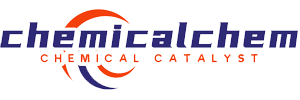
[Alias]Hydrochloric acid, salt water.
[Molecular Formula]HCI
[Properties] Hydrochloric acid is a solution in which hydrogen chloride gas is dissolved in water. Pure hydrochloric acid is a colorless liquid, tinged with hydrogen chloride. Exciting smell. Industrial hydrochloric acid is slightly yellow due to impurities such as iron and chlorine. Commercial concentrated hydrochloric acid is a hydrogen chloride aqueous solution with a concentration of about 31%, which is about 19 degrees Baume, and the relative density is 1.154. It is an inorganic strong acid with a sour taste. Easily soluble in water, ethanol and ether. Can react chemically with many metals, metal oxides, alkalis and salts. Concentrated hydrochloric acid (36%) fumes in the air, and white clouds form when exposed to ammonia vapor. Distill dilute hydrochloric acid or concentrated hydrochloric acid solution, and finally obtain an azeotrope with a constant boiling point of 108.58°C (1.01325×105Pa), containing 20.222% hydrogen chloride. Often used as standard acid solution in analytical chemistry.
[Use] Hydrochloric acid is an important chemical raw material and is widely used in fine chemicals, light textiles, dyes, medicine, food, leather , sugar and other fields. It is the raw material for manufacturing chlorides such as ammonium chloride, calcium chloride, barium chloride, zinc chloride, and ferric chloride. In the printing and dyeing industry, it is used as a pickling agent after bleaching cotton cloth, as an agent for diazotization of the color developing group when dyeing with Naftol dye, for preparing aniline salt dyes, and as a stripping agent for plating inscriptions, etc. Organic chemicals are used to manufacture ethyl chloride, methyl chloride, dichloropropane, polyvinyl chloride, etc. In the food industry, it is used to refine sodium glutamate, starch sugar, sucrose, etc. Used in the leather industry for tanning leather. It is also used in the manufacture of activated carbon, white carbon black, extraction agent, regeneration of ion exchange resin, and surface treatment of metals.
[Brief preparation method]
① Mainly include synthesis method and by-product method. The synthesis method is to electrolyze salt water solution to obtain chlorine and hydrogen. Then the chlorine is burned in hydrogen to generate hydrogen chloride gas, which is cooled and absorbed by water to obtain hydrochloric acid. The reaction formula is as follows:
Cl2 + H2 — 2HCI (hydrochloric acid)
Unconverted chlorine can be absorbed with alkali solution to form sodium hypochlorite
② Hydrochloric acid can also be prepared by a simple method using brine blocks (commonly known as salt stacks) as raw materials. The chimney block contains a large amount of magnesium chloride hexahydrate (MgCI2·6H2O), which can undergo hydrolysis under high-temperature heating to generate hydrogen chloride gas, magnesium chloride and water vapor. Hydrochloric acid is produced by absorbing hydrogen chloride gas with water.
[Safety and Protection] Hydrochloric acid is a second-level inorganic acidic corrosive substance, hazard regulation number: 93001. It is highly corrosive and can corrode metals, animal and plant fibers and human skin. In small quantities, it can be packed in plastic buckets (or ceramic jars), with a net weight of 25kg per bucket. 0.5-5kg products can be packaged in glass bottles, and the packaging must be sealed. Large amounts of hydrochloric acid need to be stored in storage tanks and transported by trucks and tankers. The material of storage tanks and other containers is steel lined with acid-resistant rubber or polyvinyl chloride hard board. There should be a "Corrosive Materials" mark on the packaging. It cannot be mixed with sulfuric acid and nitric acid, nor can it be stored and transported together with alkalis, oxidants, metal powders and flammable items in contact with water. In case of fire, water, yellow sand and carbon dioxide fire extinguishers can be used to put out the fire.
When skin or eyes come into contact with hydrochloric acid, rinse immediately with plenty of water. In severe cases, rinse with 2% to 5% baking soda solution, and then rinse with clean water. .

 微信扫一扫打赏
微信扫一扫打赏

